Mark Sisson's Blog, page 80
March 5, 2020
Lazy Keto Meal Plan
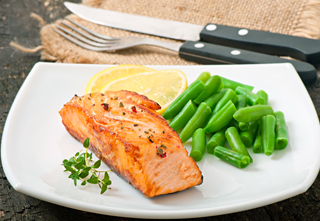 This post is a companion piece to the lazy keto article, which describes what lazy keto is and who might want to do it. The tl;dr (too long, didn’t read) version is that lazy keto is a simplified version of the keto diet where you only track carbs to make sure you’re under the limit to stay in ketosis. According to The Keto Reset Diet and Keto for Life, that would be about 50 grams total (gross) per day, with some wiggle room if most of your carbs are coming from non-starchy vegetables and avocados. Otherwise, you don’t micromanage your protein, fat, or total calorie intake.
This post is a companion piece to the lazy keto article, which describes what lazy keto is and who might want to do it. The tl;dr (too long, didn’t read) version is that lazy keto is a simplified version of the keto diet where you only track carbs to make sure you’re under the limit to stay in ketosis. According to The Keto Reset Diet and Keto for Life, that would be about 50 grams total (gross) per day, with some wiggle room if most of your carbs are coming from non-starchy vegetables and avocados. Otherwise, you don’t micromanage your protein, fat, or total calorie intake.
Lazy Keto How-to
As I mentioned in the last post, lazy keto doesn’t necessarily mean that you keep your food simple. You can be a keto gourmet and only track carbs. That said, my experience is that many people who want to do lazy keto also want their diet to be relatively low fuss.
The easiest way to do lazy keto is… well, it’s to eat carnivore. But, assuming you want to eat veggies, it’s:
Eggs and bacon/sausage/ham/steak for breakfast every morning (minimal carbs).
Same basic Big-Ass Salad for lunch every day, varying the protein and dressing to keep it interesting.
Hunk of meat and side of veggies for dinner. This requires a little bit of measuring, but if you’ve eaten, say, less than 20 grams of carbs so far, you have lots of room for error.
Obviously this is just one option. Some people only eat one or two meals per day, which makes it even easier to stay under their carb limit (but which doesn’t work for everyone). Some people prefer to load more carbs in the morning or time them around workouts. This is very much a “you-do-you” situation.
Five-Day Lazy Keto Meal Plan
Here’s one example of how you might do lazy keto. Thanks to using leftovers, it’s less work than it might seem on the surface.
A few things to note:
This plan provides a basic framework. We expect that you’ll customize it and that you’ll eat however much protein, fat, and calories you need. For example, you might add more protein to your salads or double the portion size of a dish.
This meal plan obviously won’t work for all dietary restrictions and food sensitivities. Likewise, if you need to keep your carbs below 20 or 30 grams for health reasons, this exact plan wouldn’t work perfectly for you. But, you can still use it for inspiration.
Carb counts are an estimate. For packaged food items like sausage, adjust carb counts as needed based on the exact items you use.
You’re responsible for calculating how many carbs you routinely consume in things like morning coffee, evening adult beverages, pre-workout drinks or snacks, and the like, and adjusting accordingly.
We provided the Extras and Coconut & Dairy Products tables at the end to spare you from having to look up the macros in some common snacks and add-ons. It’s not meant to be an exhaustive list of everything you might add.
Lazy Keto Info
From a carb perspective (but not a calorie perspective, obviously), these foods are “free:”
Butter, ghee, cooking oils (olive, avocado, coconut, lard, etc.), MCT oil
Unprocessed meats
Fish (fresh or canned)
Collagen peptides, unflavored
Primal Kitchen® Mayo (all flavors)
Mustard
Some foods can have more carbs than you might think. That doesn’t mean you have to avoid these foods, but do check labels:
Processed meats (e.g., beef jerkys)
Some dairy products (e.g., Greek yogurt)
Coconut products
Mollusks
Nuts and nut butters
Condiments and spice blends with added sugar; probably do avoid these since there are better options with no sugar <Primal Kitchen products cough>>
FYI, here is a keto shopping list that you can use as a general guide. We also prepared a shopping list specifically for the meal plan below; save or print the Lazy Keto Meal Plan Shopping List.
Show Me the Lazy Keto Meal Plan
OK! This meal plan and the shopping list assume you are cooking for two people. All the carb totals are PER SERVING (i.e., for one person) unless otherwise specified. Save or print the Lazy Keto Meal Plan.
Day 1:
BREAKFAST: Bacon and eggs, optional bone broth latte
One serving is 3 eggs prepared in the manner of your choosing + 3 pieces of bacon (2 grams of carbs)
See the Recipes section below for how to make the bone broth latte (1 gram of carbs)
LUNCH: Collard Green Tuna Wraps + avocado

Find the Collard Green Tuna Wraps recipe here (makes 2 servings). Substitute ¼ cup broccoli slaw for the carrots and radish in the recipe.
There are 8.3 grams of carbs total, 4 grams net, in the whole recipe with the broccoli slaw, or about 4 grams of carbs per serving.
Slice the remaining avocado and serve it on the side, or save it for dinner (4.5 grams of carbs, 1 gram net, per serving).
DINNER: Chicken Fajita Cauliflower Rice Bowls
1 bowl = 1 cup (85 g) of cauliflower rice, 4 ounces (115 g) of chicken, and ¼ of the Tex-Mex Fajita Veggies recipe below.
Cauliflower rice: 4 grams of carbs per cup (2 grams net). Prepare according to directions.
Suggested chicken recipe: Whole30 Instant Pot Ranch Chicken (2 grams of carbs per 4-ounce serving). Prepare 1 pound of chicken and refrigerate half for tomorrow’s lunch. Or, just use any grilled or baked chicken, or rotisserie chicken to save time.
Tex-Mex Fajita Veggies: Find the recipe here (makes 4 servings). Substitute avocado oil if you don’t have Primal Kitchen Italian Dressing. Each serving has 9 grams of carbs (7.5 grams net). Using the dressing adds
NOTE: Portion out and refrigerate half the Tex-Mex Fajita Veggies for tomorrow’s breakfast.
TOTAL CARBS (per person)
Breakfast = 3 grams
Lunch (½ of collard recipe + ½ of remaining avocado) = 8.5 grams
Dinner = approximately 13–15 grams, depending on chicken
TOTAL = 25–27 grams
Comments and suggestions: That’s so much leeway with your carbs! You could add salsa (~1 gram of carbs per tablespoon), shredded cheese, even more avocado, and sour cream to your fajita bowl and still have room for a couple extra eggs at breakfast and some berries with your lunch.
Day 2:
BREAKFAST: Leftover veggie scramble
For two servings, scramble 6 eggs in butter or ghee with the leftover fajita veggies. This is 11 grams of carbs per serving.
Optionally add 4 slices of chopped cooked bacon and ¼ cup shredded cheddar cheese. This adds
LUNCH: Big-ass salad with leftover chicken
Basic Big-Ass Salad (see recipe below; 14 grams of carbs total, 8 grams net)
Leftover chicken (0–2 grams of carbs for 4 ounces, 115 g)
Suggested dressing: Primal Kitchen Ranch Dressing (2 grams of carbs per 2 tablespoons)
DINNER: Slow-baked salmon, frozen green beans
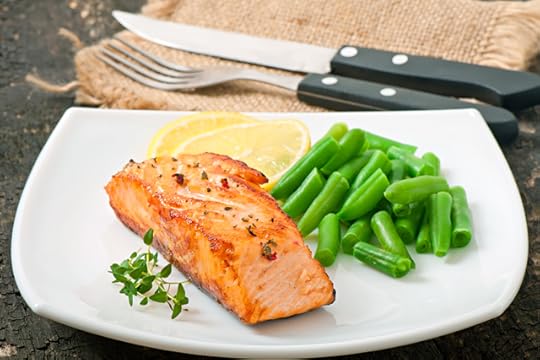
For slow-baked salmon, see recipe below (0 grams carbs)
1 cup (about 140 g) of frozen green beans per serving, thawed and sautéed in butter = 9 grams of carbs (5 grams net)
NOTE: Refrigerate half the salmon to use for lunch tomorrow.
TOTAL CARBS
Breakfast = 11 grams
Lunch = approximately 16–18 grams
Dinner = 9 grams
TOTAL = about 36–38 grams
Comments and suggestions: Optionally add slivered almonds (1.5 grams of carbs per tablespoon) and garlic (1 gram of carbs per clove) to the green beans. Serve the salmon over a bed of baby spinach (1 gram of carbs per cup) with Primal Kitchen Lemon Turmeric Vinaigrette and Marinade (2 grams of carbs per 2 tablespoons).
NOTE: Make chia pudding tonight for breakfast tomorrow (recipe below). Optionally, make the leftover salmon into the salmon spread for tomorrow’s lunch if you want to pack it in the morning.
Day 3:
BREAKFAST: Chocolate pecan chia pudding
See recipe below. Each serving has 10 grams of carbs (5.5 grams net).
LUNCH: Avocado stuffed with Primal Salmon Spread
Find the Primal Salmon Spread recipe here. Follow the linked recipe, skipping the first step where you cook the salmon, because you will use the leftover salmon from last night instead. Half the recipe contains 1.5 grams of carbs (1 gram net).
Instead of serving with nori chips, place each serving atop ½ avocado (6 grams of carbs, 2.5 grams net).
SNACK (optional, or eat with lunch): Veggies with ranch
Per serving:
1 small carrot, cut into sticks (5 grams carb, 3.5 grams net)
1 medium stalk celery, cut into sticks (1 gram carb, 0.5 grams net)
½ small cucumber, sliced (3 grams carbs, 2 grams net)
2 tablespoons Primal Kitchen Ranch Dressing (2 grams carbs)
DINNER: Hamburgers with side of broccoli
NOTE: The shopping list calls for 1 pound of ground beef. You need 6 ounces for tomorrow’s lunch. Use the remaining 10 ounces to make two 5-ounce hamburger patties for tonight’s dinner. Each hamburger has 0 grams of carbs.
Suggested toppings (per burger): 2 large lettuce leaves (2 grams of carbs) + 2 thick slices tomato (2 grams of carbs) + Primal Kitchen Mayo (flavor of your choice; 0 grams of carbs)
Prepare broccoli according to preference, either steamed, roasted, or sautéed. One cup (85 g) of broccoli florets contains 7 grams of carbs (4 grams net)
TOTAL CARBS
Breakfast = 10 grams
Lunch = 7.5 grams
Optional snack = 11 grams
Dinner (hamburger with suggested toppings + 1 cup broccoli) = 11 grams
TOTAL = about 28.5 grams without snack, 39.5 with snack
Comments and suggestions: Allot some of those extra carbs to raspberries on your chia pudding. Add cheese, bacon, and/or a fried egg to your burger.
NOTE: To save yourself time tomorrow, brown and crumble the remaining 6 ounces of ground beef for tomorrow’s lunch. Add salt and pepper to taste.
Day 4:
BREAKFAST: Broccoli slaw, zucchini, sausage sauté
Brown sliced chicken or pork sausage in fat of choice (carbs depend on brand of sausage). Add 1¾ cup broccoli slaw and 1 medium zucchini, sliced or diced (together they have 6.5 grams of carbs, 3 grams net, per serving). Sauté until veggies are just soft.
LUNCH: Cheeseburger salad
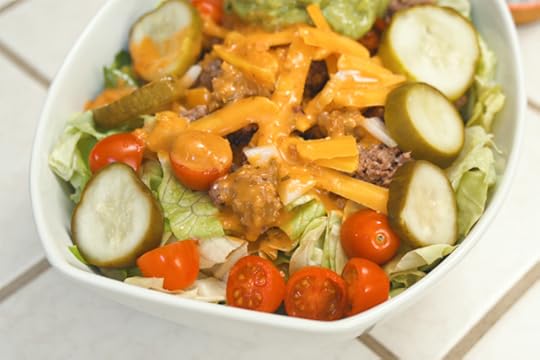
Start with the Basic Big-Ass Salad (see recipe below; 14 grams of carbs total, 8 grams net), or follow this recipe for Keto Cheeseburger Salad.
Per salad, add 3 ounces cooked ground beef, warm (about 2/3 cup; 0 grams carbs) + shredded cheddar cheese (negligible carbs) + ¼ cup sliced dill pickles (1 gram carbs, 0.5 grams net)
Suggested dressing: Primal Kitchen Thousand Island Dressing (2 grams of carbs per 2 tablespoons), but Ranch is also great.
DINNER: Steak + grilled asparagus
NOTE: You will make enough steak and asparagus for leftovers for tomorrow. Set aside 4–6 ounces of cooked steak per salad (tomorrow’s lunch). Divide the cooked asparagus in half and set aside one portion for tomorrow’s breakfast.
Prepare steak according to your preference. See how Mark prepares his steaks here.
Prepare asparagus according to your preference. If you have Primal Kitchen Lemon Turmeric Dressing and Marinade on hand, check out this recipe for Lemony Asparagus—yum! Otherwise, asparagus is great simply tossed in avocado oil, salted, and thrown on the grill with the steak (don’t overcook it). Alternately, sauté, blanche, or broil.
Per 4-ounce (113 g) serving, asparagus has about 4.5 grams of carbs (2.5 grams net).
TOTAL CARBS
Breakfast = 6.5 grams + carbs from sausage, if any
Lunch = 17 grams
Dinner = 4.5 grams
TOTAL = 28 grams + carbs from sausage, if any
Comments and suggestions: Perhaps you’d enjoy mashed cauliflower at dinner (this mashed cauliflower recipe has about 7 grams of carbs per serving), and some crumbled blue cheese on your steak?
Day 5:
BREAKFAST: Asparagus with poached eggs and bacon
Warm the leftover asparagus from last night’s dinner. Divide between two plates and top each with two poached eggs (1 gram of carbs per serving) and a side of bacon.
Don’t know how to poach? Make fried or scrambled eggs instead.
LUNCH: Steak big-ass salad
Start with Basic Big-Ass Salad (see recipe below; 14 grams of carbs total, 8 grams net), and add leftover steak.
Optionally, add ¼ cup crumbled blue cheese (1 gram of carbs).
Suggested dressing: Primal Kitchen BBQ Ranch Dressing (2 grams of carbs per 2 tablespoons) or Balsamic Vinaigrette and Marinade (3 grams of carbs per 2 tablespoons).
DINNER: Zoodles with turkey meat sauce
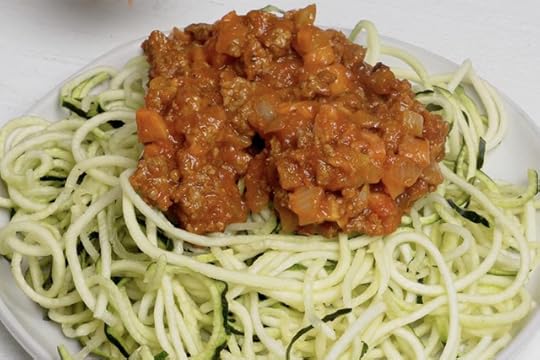
Brown ground turkey. Add 2 cups of tomato sauce and let simmer for 5 minutes. Taste and adjust salt and pepper. Add zoodles and cook about 3 minutes until just warmed through. Optionally top with shredded parmesan cheese.
One serving = ¼ of recipe (11 grams of carbs, 9 grams net)
TOTAL CARBS
Breakfast = 6.5 grams
Lunch = 17–18 grams
Dinner = 11 grams
TOTAL = 34.5–35.5 grams
Comments and suggestions: If you’re not sick of salad, serve zoodles with a side spinach salad.
RECIPES
BONE BROTH LATTE
(Makes 2 servings)
Ingredients
3 cups (720 mL) chicken bone broth (or substitute beef)
2 tablespoons (28 g) unsalted butter or ghee (substitute coconut oil or avocado oil for dairy-free)
Fine salt to taste
Directions:
Warm the broth. Add the butter or ghee and use an immersion blender to blend until frothy.
Divide between two mugs. Add salt to taste.
BASIC BIG-ASS SALAD
(Makes 2 servings)
Ingredients
3 cups (5 oz, 47 g) chopped Romaine lettuce
1 cup (3 oz, 85 g) broccoli slaw, store-bought
8 grape tomatoes (about 2 oz, 56 g), halved
¼ cup (1.25 oz, 36 g) diced cucumber
Directions:
Divide lettuce between two serving bowls. Top each with half the broccoli slaw, tomatoes, and cucumber.
Add additional ingredients according to directions in the Meal Plan above.
SLOW-BAKED SALMON
(Makes 4 servings)
Adapted from The Keto Reset Diet
Ingredients
1 pound (450 g) skin-on salmon fillets
½ tablespoon (7.5 ml) avocado oil
Kosher salt
Freshly ground black pepper
Directions:
Preheat the oven to 275°F (135°C). Place the salmon on a rimmed baking pan greased or lined with parchment paper. Brush the oil over the top of the fish. Sprinkle with salt and pepper.
Bake the salmon for 16 to 18 minutes, until you are just able to flake it with a fork.
CHOCOLATE PECAN CHIA PUDDING
(Makes 2 servings)
Adapted from The Keto Reset Diet Cookbook
Ingredients
¾ cup + 2 tablespoons (207 mL) canned coconut milk
2 tablespoons (30 mL) filtered water
2 tablespoons (20 g) chia seeds
¼ cup (27 g) chopped pecans
1 tablespoon (5 g) cocoa powder
¼ teaspoon (2.5 mL) vanilla extract
¼ teaspoon (.65 g) ground cinnamon
10 drops liquid stevia, or to taste (or substitute keto-friendly sweetener of choice)
Directions:
Mix all the ingredients well. Divide between two jars. Cover and refrigerate overnight.
Extras & Snacks
Food
Serving Size
Calories
Fat (g)
Carbs (g)
Protein (g)
Avocado
1/2 (68 g)
114
10.5
6
1.5
Blackberries
1/4 cup (36 g)
15
0
3.5
0.5
Blueberries
1/4 cup (37 g)
21
0
5.5
0.5
Raspberries
1/4 cup (31 g)
16
0
4
0
Strawberries (halves)
1/4 cup (38 g)
50
0
3
Egg, hard-boiled
1 large
78
5.5
0.5
6.5
Almonds, raw
1/4 cup (36 g)
208
18
8
7.5
Macadamias, raw
1/4 cup (34 g)
241
25.5
4.5
2.5
Pecans, raw
1/4 cup (30 g)
210
21
4
3
Walnuts, raw
1/4 cup (25 g)
163
16
3.5
4
Green olives
1/4 cup (40 g)
58
6
1.5
0.5
Primal Kitchen Keto Bar Almond Spice
1 bar
200
16
9
8
Primal Kitchen Keto Bar Chocolate Coconut
1 bar
200
16
10
8
Primal Kitchen Keto Bar Coconut Lime
1 bar
200
16
10
8
Primal Kitchen Keto Bar Peanut Butter
1 bar
200
15
10
9
Primal Kitchen Keto Bar Mint Chip
1 bar
200
16
10
8
Coconut & Dairy Products
Food/Beverage
Serving Size
Calories
Fat (g)
Carbs (g)
Protein (g)
Coconut, shredded
2 Tbsp (10 g)
66
6.5
2.5
0.5
Coconut butter
1 Tbsp (14 g)
90
9
3.5
1
Coconut milk (canned, full fat)
1/4 cup (65 mL)
130
12
3
0.5
Blue cheese, crumbled
2 Tbsp (14 g)
50
4
0.5
3
Cheddar cheese, shredded
2 Tbsp (14 g)
55
4.5
0
3.5
Feta cheese, crumbled
2 Tbsp (19 g)
50
5
1
3
Parmesan cheese, shredded
2 Tbsp (14 g)
40
2
0
4
Cheese stick, mozzarella
1 ounce (28 g)
80
5
1
8
Cottage cheese
1/2 cup (105 g)
103
4.5
3.5
11.5
Greek yogurt, plain, full fat
1/2 cup (122 g)
143
12
5.5
4.5
Half & half
1 Tbsp (15 mL)
19
1.5
1
0.5
Heavy whipping cream
1 Tbsp (15 mL)
15
5.5
0.5
0.5
Sour cream
1 Tbsp (15 mL)
28
3
1
0.5
Note, always check labels for variance in specific products.
Read More
Lazy Keto: Worth the Hype, or Just a Dirty (Keto) Trick?
90-Minute Keto Meal Prep
15-Minute Meal Prep: Keto Ground Beef Recipes
Keto Meal Plan
Carnivore Diet: Pros, Cons, and Suggestions
8 Things We Can Learn From the Carnivore Movement
The post Lazy Keto Meal Plan appeared first on Mark's Daily Apple.



March 4, 2020
Is Intermittent Fasting Bad for People with Thyroid Issues?
 Is intermittent fasting a good idea for people with thyroid issues?
Is intermittent fasting a good idea for people with thyroid issues?
It’s a common question. After all, we know that the thyroid gland is a sensitive barometer of overall caloric sufficiency in the body. If a fast sends a message of caloric insufficiency, and the body thinks “times are tough,” the thyroid may presumably down-regulate its function to slow down the metabolic rate and preserve energy and nutrients. Caution is justifiable.
What Happens to Thyroid Function When You Fast?
It’s all going to be specific to the individual fasting, of course, but here’s what studies of humans have shown:
In 1978, researchers placed 45 obese human subjects on a 4-day fast, studying their thyroid hormones levels before and during the fast, and after refeeding. Everyone’s TSH (thyroid stimulating hormone) and T4 (inactive thyroid hormone) went up during the fast. Everyone’s T3 (active thyroid hormone) dropped. Men saw bigger changes than women. When they supplemented T4 during the fast, T3 still dropped. When they supplemented T3, T3 was maintained.
After the fast, what the people ate affected whether their thyroid hormones recovered.
Those who ate pure carbohydrate saw their T3 return to normal.
Those who ate mixed meals of fat, carbs, and protein saw their T3 return to normal.
Those who ate only protein still had lower T3.
Those who ate only fat still had lower T3.
Summary: A four-day fast depresses thyroid function in obese people without preexisting thyroid issues. Refeeding with carbs and/or a mixed meal restores it; protein or fat alone does not.
In 1980, researchers placed obese human subjects with normal thyroid function on a 10-day fast. Prior to fasting, they ate 1500 calories per day for five days. During the fast, their T3 levels dropped from 167 ng/dl to 86 ng/dl despite repeated infusions of thyrotropin releasing hormone (TRH), to which they were unresponsive. Normally, TRH will cause TSH to rise, thereby stimulating thyroid hormone production, but this didn’t happen during the fast.
After fasting, five days of 1500-calorie refeeding still weren’t enough for T3 and TSH responsiveness to TRH infusions to fully recover.
Summary: A 10-day fast depresses T3 levels and thyroid responsiveness to thyrotropin releasing hormone, even after five days of refeeding.
What about shorter, less extreme fasting? Most people reading this aren’t doing 4- or 10-day fasts. They’re doing truncated eating windows. They’re skipping meals for a day, here and there. Do we have any studies on thyroid function during those types of fasts?
In Ramadan fasting, you eat before sunrise and fast until sunset. During the fast, you abstain from both food and drink (even water). Ramadan fasting is less extreme than four-day or 10-day all-out fasts and thus a bit more relevant to the average IFer.
In healthy Muslim males, Ramadan fasting has no effect on thyroid function or hormone levels. Other than minor fluctuations, TSH, T3, T4, and all other measures of thyroid function remain virtually unchanged in males during Ramadan.
Women may experience drops in T4 and T3 during the last few days of Ramadan.
Most interestingly, Ramadan fasters who are hypothyroid patients taking thyroid hormones generally do not have to increase their dosages during Ramadan. In fact, they see improved quality of life following the month of fasting.
How About Alternate-Day Fasting?
In one study, groups of people with subclinical hypothyroid and normal thyroid status were either placed on alternate-day fasting (25% of calories on fasting days, 125% of calories on non-fasting days) or calorie restriction (75% of calories in perpetuity) for six months. Both groups lost about the same amount of weight and body fat. In hypothyroid patients, fasting produced greater improvements in fasting insulin and insulin resistance.
In other words, it worked about as well as (and in some respects, better than) calorie restriction.
That’s about it for published research on the effects of fasting on thyroid function in both euthyroid and subtly hypothyroid people. While there weren’t any studies I could find looking at the effects of intermittent fasting on clinically hypothyroid people, I think we can make some inferences on fasting and hypothyroidism.
Tips for Fasting When You Have Thyroid Issues
1. Make sure you’re replete in the thyroid-relevant nutrients.
Like:
Selenium: for converting T4 to active T3
Iodine: for making thyroid hormone
Zinc: for thyroid function
2. Don’t combine fasting with extreme calorie restriction.
What really seems to destroy thyroid function is chronic calorie restriction—going “without” for weeks, months, and years on end. Your thyroid is always watching you, watching the signals you send. Feasting and fasting sends a signal of abundance. Reducing calories by 20% for months sends the opposite signal, and reduced thyroid function may be the result.
If you fast, make sure you eat enough food when you actually eat.
3. If you’re hypothyroid but have it under control with thyroid hormone, fasting will probably work for you.
Taking thyroid hormone the right way effectively renders you euthyroid (normal thyroid function). You can proceed with fasting without much worry; just monitor your thyroid hormones and track your subjective impression of how it’s going.
4. If you’re subclinically hypothyroid, fasting is probably okay.
Research linked above shows that people with subclinical hypothyroid can benefit from alternate day fasting (where the “fast” day is actually a super low-calorie day and the “fed” day involves eating extra food).
5. If you’re hypothyroid and trying to fix it naturally, long fasting is probably not a great idea.
One of T3’s roles is to protect the muscle from atrophying during fasts. If you have low T3 and want to handle it naturally, launching into a fasting routine will probably be counterproductive and may even speed up muscle loss. This is exactly what you don’t want to happen during a fast.
Get the hypothyroidism handled before you try a serious fast (~24 hours+).
6. If you’re hypothyroid and trying to fix it naturally, shorter eating windows may help.
I don’t recommend 24 hour+ fasts for hypothyroid patients going it alone, but I do think there’s an argument for a shorter eating window, especially if that eating window falls during the daylight hours.
Like everything else in the body, thyroid function follows a circadian rhythm. Food is a powerful circadian entrainer. If you’re eating at all hours of the day and night, or packing most of your calories late in the day and on into the evening hours, this may throw off your circadian rhythm and your thyroid function along with it.
Conversely, if your eating window is from 9 a.m. to 5 p.m., you’re eating with the sun, which syncs your biological clock with the objective daytime.
7. Be careful on the extended fasts.
I don’t recommend them for hypothyroid patients, but I know you’re a curious, experimental bunch who will try it regardless. If that’s you, be cautious. Listen to your body. Track your numbers. Don’t be afraid or feel ashamed if you have to cut the fast short with a meal.
8. If it feels stressful, it probably is.
Stress inhibits the conversion of T4 to T3, thereby reducing the level of active thyroid hormone in your body. Don’t ignore stress, especially if it’s the fasting that seems stressful.
9. If fasting affects your sleep, it’s probably affecting your thyroid.
Adequate sleep is a bare minimum requirement for good thyroid function. Some (but not all) people report worse sleep when fasting. Others (but not all) report better sleep when fasting. This could go either way—just make sure you know which way it’s affecting you and your sleep.
That’s about it. The subject isn’t as extensively researched as I’d like, and there’s a lot of individual variation, but we have a decent amount of info to go on and can make some decent inferences. If you have any questions about fasting and hypothyroidism, ask down below. I can probably pick Elle Russ’ brain (the real thyroid expert around here) for some input, too.
Take care, everyone!
References
Azizi F. Effect of dietary composition on fasting-induced changes in serum thyroid hormones and thyrotropin. Metab Clin Exp. 1978;27(8):935-42.
Burman KD, Smallridge RC, Osburne R, et al. Nature of suppressed TSH secretion during undernutrition: effect of fasting and refeeding on TSH responses to prolonged TRH infusions. Metab Clin Exp. 1980;29(1):46-52.
Sheikh A, Mawani M, Mahar SA. IMPACT OF RAMADAN FASTING ON THYROID STATUS AND QUALITY OF LIFE IN PATIENTS WITH PRIMARY HYPOTHYROIDISM: A PROSPECTIVE COHORT STUDY FROM KARACHI, PAKISTAN. Endocr Pract. 2018;24(10):882-888.
Akasheh RT, Kroeger CM, Trepanowski JF, et al. Weight loss efficacy of alternate day fasting versus daily calorie restriction in subjects with subclinical hypothyroidism: a secondary analysis. Appl Physiol Nutr Metab. 2020;45(3):340-343.
Ucci S, Renzini A, Russi V, et al. Thyroid Hormone Protects from Fasting-Induced Skeletal Muscle Atrophy by Promoting Metabolic Adaptation. Int J Mol Sci. 2019;20(22)
The post Is Intermittent Fasting Bad for People with Thyroid Issues? appeared first on Mark's Daily Apple.



March 3, 2020
The Foolproof Way to Increase Your Odds of Reaching Your Goals
 Hi folks, this post comes from Erin Power, coaching director for Primal Health Coach Institute. Erin plans to post frequently to share the tips, tools, and proven strategies she’s used with her clients, students, and graduates over the past decade regarding motivation, inspiration, and achieving goals. Enjoy!
Hi folks, this post comes from Erin Power, coaching director for Primal Health Coach Institute. Erin plans to post frequently to share the tips, tools, and proven strategies she’s used with her clients, students, and graduates over the past decade regarding motivation, inspiration, and achieving goals. Enjoy!
You’ve likely seen the stats. Up to 92% of people never get the satisfaction of achieving their goals. But it doesn’t have to be that way.
Maybe your goal is to stick to a six-hour eating window. Or improve the quality of your sleep. Or stop consuming industrialized oils.
All fantastic goals.
But without the right approach, you’ll be joining the ranks of the defeated faster than you can say metabolic flexibility.
Why Accountability Is Key
You might be telling yourself, “I’ve always been addicted to sugar”, or “these extra 40 pounds just love me too much.” While those statements might have been true for you in the past, there’s a big difference between people who reach their goals (i.e. get off the sugar addiction rollercoaster or drop the weight for good) and those who don’t.
And that’s accountability.
Personally, I love teaching my clients to be responsible for their own actions, versus relying on me to hold them accountable. I provide the education and support, but when it comes to accountability, it’s best to be your own biggest advocate. That means taking charge of your circumstances by getting clear on your goals—and the reasons why you want to achieve those goals. There’s plenty of science behind this approach too.
In 1977, social cognitive psychologist, Albert Bandura proposed a concept he referred to as self-efficacy. It’s the idea that if people believe they can change their behaviors, they’ll be more successful at doing so. Dozens of studies have been published based on the topic, including this one that investigated the effects of self-efficacy on weight loss. During the study, overweight subjects were assigned to high or low self-efficacy groups and told to follow a weight loss program within the context of self-control. As you might expect, researchers found that the high self-efficacy group lost substantially more weight than their low-efficacy counterparts.
Another way to stay accountable is to have a partner—someone who has the same, or similar goals, as you do. Together, you commit to taking the necessary steps to lock in new behaviors, checking in with each other regularly and holding each other accountable. It could be in the form of a gym buddy, a co-worker you walk with at lunch, or an online group focused on intermittent fasting.
And I’m not alone on this theory.
In a study conducted by Dominican University of California psychology professor, Dr. Gail Matthews, participants wrote down their goals, then half the group was asked to send regular progress reports to a friend. The results showed that the group who had an accountability partner was 76.7% more successful at achieving their goals than the group that didn’t.
I’m actually using an accountability partner right now to make sure I’m up at 5:00 a.m. for gratitude practice and meditation. We call each other at 5:15 every morning to see if we’re awake and haven’t mashed the snooze button (we’ve also committed to getting to bed no later than 9:30 p.m. so we aren’t skimping on sleep). Because we have the same goal, it works beautifully.
My 5 Step Accountability Plan
Here’s a tool you can use to develop accountability on both a personal and peer-to-peer level. Create your plan by answering these five questions:
What’s your specific goal?
Rather than attempting to: “skip the banana and yogurt and instead break the fast with an epic protein-forward meal”, get more detailed by saying, “Tomorrow for my break-the-fast meal, I’ll fry up three eggs and one of those sausages I got from the farmer’s market.” Specificity makes it easier to know if and when you’ve reached your goal. Like I mentioned above, you can increase your accountability by partnering with someone who has similar goals as you do. (Maybe you think it sounds strange to have an accountability partner for breakfast, but in the name of achieving your health goals, why not?)
What new habits will you put into place?
To be successful, you have to identify the actions you’ll be taking—ask yourself what you’ll be doing and when you’ll be doing them. Using the example above, you’d need to figure out:
what time you’ll want to eat breakfast
whether you’ll need to set your alarm 15 minutes earlier to have the time to prepare it
whether you’ll need to run to the store on the way home from work tonight to pick up some eggs or butter
how you’ll track your progress on this goal.
How will you assess how you’re doing?
Check in with yourself regularly. Using a tracking app or journal is a great way to monitor your progress. These methods make it really easy to see if you’re being consistent with your actions, plus the act of recording your new behavior helps you feel successful as you work toward your goal. If you’re working with an accountability partner, you still can—and should—track your progress, but it’s also important to schedule regular appointments with each other to check in.
What’s your why?
You might discover that you’re not being as consistent with your actions as you’d like. That’s where finding your why comes in. Really thinking about why this goal is important to you and why that matters can help solidify your actions. It might also make you realize that your goal isn’t realistic—or it’s not as important as you once thought. Use my Whyx5 Method to help uncover your true motivation for change.
What are the consequences of not reaching your goal?
Behavior change can be hard, but often times doing nothing—or sabotaging your own efforts—ends up being harder in the long run. Visualize how you’ll feel if you don’t hold yourself accountable. And in contrast, how will you feel if you do?
How to Create an Accountability Plan
I can’t say it enough. One of the most common differences between people who reach their goals and those who don’t is accountability. Being responsible for your own actions is key if you want to be successful. And partnering up with someone who has similar goals is like the protein-packed icing on the cake. Got goals you’ve been trying to reach? Create your own accountability plan by following these five steps:
Get specific about your goals
Identify your new habits
Check in regularly
Remember why it’s important
Consider the consequences
The post The Foolproof Way to Increase Your Odds of Reaching Your Goals appeared first on Mark's Daily Apple.



March 2, 2020
Why I Eat Organ Meat Weekly, and You Should Too

If you have your own success story and would like to share it with me and the Mark’s Daily Apple community please contact me here. I’ll continue to publish these as long as they keep coming in. Thank you for reading!
Folks, I have been grateful for every story that has come my way over the years. It’s an incredible privilege being on the receiving end of your reflections and evolutions, and they are why I’ve kept at it all these years—knowing the message and information have made a difference in people’s lives. I appreciate every single one. This success story comes from Dr. Terry Wahls, pioneer of the Wahls Protocol®, a way to address quality of life issues experienced by sufferers of autoimmune and other disorders through diet and lifestyle changes. Enjoy! —Mark
I eat liver once a week and tell my patients to do the same. Liver and organ meat are a critical part of the treatment protocols I use in my clinic and my clinical research. And they were crucial to my own recovery.
For decades, I suffered from relentlessly worsening pain and disability, including wheelchair dependence. I was able to reverse all this decline and end my pain using principles of ancestral health, evolutionary biology, and functional medicine.
When I first got sick, I gave up the low fat vegetarian diet I’d followed for years and adopted the paleo diet. But my health continued to decline. So I read the basic science models for my disease (multiple sclerosis) and decided that mitochondria are a key driver in neurodegeneration and worsening disability. I devised a supplement program to support my mitochondria. This reduced my fatigue and the speed of my decline slightly. I learned more biochemistry from functional medicine and made my list of supplements longer. This slowed my decline a little bit more.
At that point, I was too weak to sit up in a regular chair, confined to a zero gravity chair with my knees higher than my nose. My brain fog was worsening. The electrical face pains due to trigeminal neuralgia were more severe, more frequent, and more difficult to turn off. The future looked incredibly grim. That is when I decided to redesign my paleo diet to get the nutrients I was taking in supplement form from food. Cell chemistry is far more complex than physicians and scientists understand, and I thought maybe food would have more of an impact than nutrients in pill form.
How I Changed My Paleo Diet to Start Healing
I had already removed grain, legumes, dairy, processed foods, and sugar from my diet. I used the papers by Beal and Bourre, my readings in Ancestral Health and Functional Medicine, and the Linus Pauling Institute at Oregon State University to create a list of superfoods to stress in my diet (See Key Nutrients for Brain Health and Table 2, Liver Is a Superfood).
I began this new version of my paleo diet, and the results were stunning. Within three months, my face pain was gone. So was the brain fog and the severe fatigue. I began walking again. In less than a year I was biking, completing an 18.5 mile bike ride with my family. A key part of my dietary change was adding liver once a week. Liver is a superfood, but too many of us are not consuming liver or any organ meat. Everybody with an autoimmune disorder should have liver as a regular part of their diets.

Retinol, or vitamin A, is essential to the development of immune cells, including T helper cells (Th cells), T regulatory cells (Tregs), and antibody-producing cells (B cells), as well as healthy barrier function in the gut. Inadequate vitamin A levels may lead to abnormal immune function, decreasing tolerance and increasing the risk of autoimmunity. Carotenoids in plants, such as beta-carotene, can be converted by gut enzymes into retinol, which is the active form of vitamin A. However, there is considerable variability in the efficiency of the enzymes that do this conversion. Depending on your enzymes, you may have a 70% reduction in your ability to convert plant-based carotenoids into retinol. Those with an autoimmune diagnosis are more likely to have a less efficient conversion of beta carotene into retinol and would benefit from consuming liver, which is an excellent source of retinol.
In addition to retinol, organ meat is an excellent source of B vitamins, including vitamin B12 and folate. Many individuals with multiple sclerosis have an elevated homocysteine, which is a measure of the efficiency and effectiveness of our brains’ use of B vitamins. If homocysteine is elevated, we likely have inadequate levels of B vitamins (especially vitamins B6, B9, and B12), which leads to a higher rate of neurodegeneration, cognitive decline, and heart disease. Liver is an especially good source of easily digested and absorbed B vitamins, which are critical for those with multiple sclerosis.
As you can see from Table 2, liver is an excellent source of the key brain nutrients identified in Table 1. It is not a good source of vitamin C, which you will get from greens. If you have multiple sclerosis or other autoimmune issues, adding organ meats to your diet is an important step in your healing journey, providing several important vitamins and minerals that can soothe immune dysfunction and promote repair in the body.
Why I Prefer Food to Supplements
Most studies using supplements have disappointing results. There are multiple large epidemiologic studies of dietary intake and clinical outcomes that demonstrate that dietary patterns rich in vegetables and meat and low in added sugars (such as the plans we use in our clinical trials study dietary trials for multiple sclerosis patients) are strongly associated with better clinical outcomes for a specific disease. But a large, supplement-based clinical trial often fails to show much benefit using targeted nutritional supplement(s). That does not surprise me at all.
Food is complex. There is synergy between the elements of each foodstuff you consume and the overall dietary pattern, meaning what else you eat. Organ meats are more than vitamin A, B6, B9, and B12. They are a rich mixture of vitamins in multiple forms that interact with other vitamins, minerals, fatty acids, and compounds. This complex interaction determines how we do the chemistry of life. We get these compounds in the biologic ratios that our cells expect, which is why dietary pattern studies that stress consumption of vegetables, berries, and meat, decreased sugars, and increased intake of these key nutrients have outcomes that are consistently more favorable than those that rely on supplements only.
I tell my patients to eat liver once a week, heart once a week, and mussels and oysters regularly. These foods offer powerful, healing nutrition for anyone with multiple sclerosis or a serious autoimmune problem. Limit liver intake to 6 to 8 ounces a week because retinol does have a relatively narrow range of dietary intake. Too little and we increase the risk of autoimmune disease, cancer, and infection. Too much, however, increases the risk of fibrosis and scarring of the liver and lungs, which are irreversible. For that reason, I recommend eating no more than 6 to 8 ounces of liver per week, plus an additional 6 to 8 ounces of mussels, clams, oysters, heart, or other organ meats each week.
Food is what nature intended. Food is how I got out of the wheelchair and began walking, hiking, and biking again. Food is what I stress in my clinics and in my clinical trials.
You can get your life back on track, one meal at a time. If you use supplements, use whole food–based supplements, such as organ meat capsules, to ensure you are getting the benefits of food with all the wonderful synergy that whole foods supply. Immune dysfunction, leaky gut, and altered microbiome are all present in the setting of multiple sclerosis and autoimmune processes. Adding organ meats to your diet, particularly from grass-fed and grass-finished animals, can help address these issues.
I taught the concepts of the Wahls Protocol® to patients in primary care and traumatic brain injury clinics. Time and time again, we saw that adopting the protocol led to stabilizing and regression of symptoms. Patients with high blood pressure, severe morbid obesity, rheumatoid arthritis, systemic lupus, fibromyalgia, traumatic brain injury, anxiety, and depression all improved when they followed the Wahls Protocol®.
I also use these concepts in my clinical trials, testing the Wahls Protocol® in the setting of multiple sclerosis to improve quality of life and reduce fatigue.
Each summer I host an in-person event to teach the public and health professionals how to use these concepts in their lives and their clinics. We are seeing more and more people embrace using food, including liver, to get their lives and health back on track.
Key Nutrients for Brain and Spinal Cord Health
Vitamin B1
Alpha carotene
Carnitine
Vitamin B2
Beta carotene
Alpha-Lipoic acid (ALA)
Vitamin B3
Beta cryptoxanthin
Creatine
Vitamin B5
Lutein
Cholesterol
Vitamin B6
Lycopene
Alpha-linolenic fatty acid
Vitamin B9
Zeaxanthin
Eicosapentaenoic acid (EPA)
Vitamin B12
Iron
Docosahexaenoic acid (DHA)
Vitamin C
Copper
Arachidonic acid (AA)
Vitamin D
Zinc
Gamma-linolenic acid (GLA)
Vitamin E
Iodine
Linoleic acid (LA)
Vitamin K
Magnesium
N Acetyl cysteine
Co-Enzyme QA10
Selenium
Taurine
Table 2
Liver: A Superfood
Minerals (mg/100g)
& Vitamins (100g)
Kale
Turkey (roasted)
Beef Liver
Beef Heart
Calcium
72
26
6
94
Iron
0.9
1.79
6.54
1.17
Magnesium
18
25
21
23
Phosphorus
28
203
497
36
Potassium
228
280
352
296
Sodium
23
68
79
30
Zinc
0.24
2.96
5.3
0.5
Vitamin C, mg
41
0
1.9
53.3
Thiamin mg
0.053
0.057
0.194
0.069
Riboflavin mg
0.07
0.177
3.425
0.091
Niacin mg
0.5
5.088
17.525
0.65
Vitamin mg B-6
0.138
0.41
1.017
0.179
Folate, mcgDFE
13
7
253
17
Vitamin B-12µg
0
0.35
70.58
0
Vitamin A, RAE
681 mcg
0
9442 mcg
885 mcg
Vitamin A, IU
13621
(carotene)
0.34
(retinol)
31714
(retinol)
17707
(retinol)
Vitamin E mg
0.85
0
0.51
1.1
Vitamin K µg
817 (K1)
1.3
3.3 (K2)
0.5
This table was created using the USDA Information from U.S. National Nutrient Database for Standard Reference: Food Composition Databases Show Foods List.
Read More in The Revised and Expanded Wahls Protocol
I have written a book, The Revised and Expanded Wahls Protocol: A Radical New Way to Treat All Chronic Autoimmune Conditions Using Paleo Principles, that details the protocol we use in our clinics and clinical trials.

The revised edition includes updated science and recommendations based on all that we’ve learned in the last five years. I explain how diet changes gene expression and can turn off disease-promoting genes and turn on health-promoting ones. I review the latest information on how gut bacteria increase or decrease inflammation in the brain and body. I explore how daily diet choices determine what bacteria grow in our bowels. I have greatly expanded guidance on how to personalize the dietary recommendations based on your current symptoms and health issues.
Even if you have the original edition of The Wahls Protocol, you will want to pick up the revised and expanded edition to get all the new information on diet personalization, microbiome, gene expression, health behavior change, metabolic resilience, emotional resilience, and neurorehabilitation. If you want to see something extraordinary, check out the research papers and videos on my website that demonstrate the remarkable improvement in walking that patients in our clinical trials have been able to achieve.
References
Beal MF, Bioenergetic approaches for neuroprotection in Parkinson’s disease. Ann Neurol. 2003; 53:Suppl 3:S39-47; discussion S47-8
Bourre JM. Effects of nutrients (in food) on the structure and function of the nervous system: update on dietary requirements for brain. Part 1: micronutrients. J Nutr Health Aging. 2006 Sep-Oct;10(5):377-85. PubMed PMID: 17066209.
Bourre JM. Effects of nutrients (in food) on the structure and function of the nervous system: update on dietary requirements for brain. Part 2 : macronutrients. J Nutr Health Aging. 2006 Sep-Oct;10(5):386-99. PubMed PMID: 17066210.
Pinod-Lagos K, Benson MJ, Noelle RJ, Retinoic acid in the immune system, Ann NY Acad Sci 2008 Nov; 1143:170-87.doi10.1196/annals.1443.017.
AbdelhamidL, Luo XM, Reinoic Acid, Leaky Gut, and Autoimmune Diseases. Nutrients. 2018 Aug 3; 10(8).pii: E1016. doi:10.3390/n710081016.
Fahmey EM Relation of serum levels of homocysteine, vitamin B12 and folate to cognitive functions in multiple sclerosis patients. Int J Neurosci. 2018 Sep;128(9):855-841.doi1080/00207454.2018.1435538. Epub 2018 Feb 21
A multimodal intervention for patients with secondary progressive multiple sclerosis: feasibility and effect on fatigue. Bisht B, Darling WG, Grossmann RE, Shivapour ET, Lutgendorf SK, Snetselaar LG, Hall MJ, Zimmerman MB, Wahls TL. J Altern Complement Med. 2014 May;20(5):347-55. doi: 10.1089/acm.2013.0188. Epub 2014 Jan 29.
Multimodal intervention improves fatigue and quality of life in subjects with progressive multiple sclerosis: a pilot study. Bisht B, Darling WG, Shivapour ET, Lutgendorf SK, Snetselaar LG, Chenard CA, Wahls TL. Degener Neurol Neuromuscul Dis. 2015;5:19-35. doi: 10.2147/DNND.S76523. Epub 2015 Feb 27.
Nutrient Composition Comparison between a Modified Paleolithic Diet for Multiple Sclerosis and the Recommended Healthy U.S.-Style Eating Pattern. Chenard CA, Rubenstein LM, Snetselaar LG, Wahls TL. Nutrients. 2019 Mar 1;11(3). pii: E537. doi: 10.3390/nu11030537.
The post Why I Eat Organ Meat Weekly, and You Should Too appeared first on Mark's Daily Apple.



February 29, 2020
Primal Breakfast Cookies
 Breakfast cookies are a fantastic way to get some on-the-go nutrition. These cookies are loaded with healthy fats, different forms of protein, and a little sweetness and crunch. The ground cashews provide a sweet and nutty cookie that’s milder compared to almond-based cookies. Feel free to swap out ingredients to change the flavor of the cookies. Try different nuts or seeds, a mashed banana instead of applesauce, or a different flavor of collagen.
Breakfast cookies are a fantastic way to get some on-the-go nutrition. These cookies are loaded with healthy fats, different forms of protein, and a little sweetness and crunch. The ground cashews provide a sweet and nutty cookie that’s milder compared to almond-based cookies. Feel free to swap out ingredients to change the flavor of the cookies. Try different nuts or seeds, a mashed banana instead of applesauce, or a different flavor of collagen.
Primal Breakfast Cookies
Time: 25 minutes
Servings: 14 medium-sized cookies
Ingredients

2 Tbsp. salted butter, melted
1/2 cup unsweetened applesauce
1/2 cup all-natural almond butter
2 Tbsp. maple syrup
1/2 tsp. vanilla extract
3/4 cup cashews
1/4 cup ground flaxseed
1 scoop Primal Kitchen Vanilla Collagen Fuel
1 Tbsp. coconut flour
1/2 tsp. baking soda
1/8 tsp. salt
1 egg
1/4 cup pumpkin seeds
3/4 cup frozen cranberries
40g 95% dark chocolate, chopped
Instructions
Preheat your oven to 325ºF. In a bowl, combine the melted butter, applesauce, almond butter, maple syrup, and vanilla extract.
Use a high-speed blender to blend up the cashews into a flour.
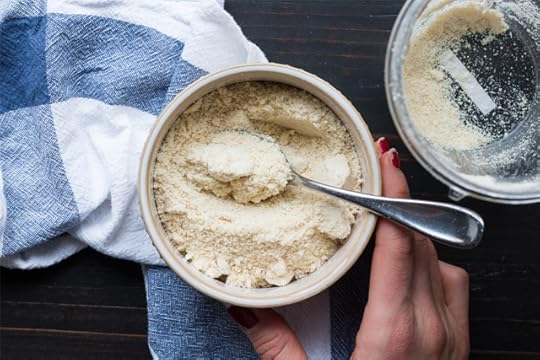
Add the ground cashews, flaxseed, collagen, coconut flour, baking soda, and salt to the bowl, and stir until combined.
Whisk the egg and add it to the dough. Fold in the pumpkin seeds, frozen cranberries, and chopped chocolate. Allow the dough to rest for 1–2 minutes to allow the coconut flour to absorb some of the liquid. The dough will still be sticky after resting.

Use an ice cream scoop or cookie scoop to scoop out balls of dough. Place the cookie dough balls on a parchment-covered sheet pan. You may need to use two baking sheets, depending on their size.
Flatten each ball slightly. Bake in the oven for 12–14 minutes, or until they are slightly golden. Allow them to cool before removing them from the sheet pan and enjoying. The cookies will continue to firm up as they cool.

Nutrition Information (per cookie; recipe makes 14 medium cookies):
Calories: 171
Total Carbs: 9 grams
Net Carbs: 6 grams
Fat: 13 grams
Protein: 8 grams
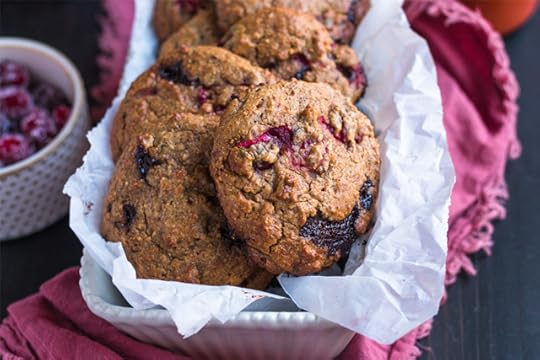
The post Primal Breakfast Cookies appeared first on Mark's Daily Apple.



February 28, 2020
Weekly Link Love – Edition 70

Research of the Week
Sufficient training may make meal timing less important for weight management.
Increasing handwashing at airports could have a huge impact on the risk of pandemics.
Dogs were probably domesticated during the Ice Age.
Using forced swim tests to determine a lab mouse’s depression probably doesn’t work.
How does ketosis impact appetite? A review.
New Primal Blueprint Podcasts
Episode 405: Sara Hall: Host Brad Kearns chats with Sara Hall, fresh off her amazing 2:22 marathon.
Episode 406: Paul Saladino, MD: Host Elle Russ chats with Dr. Paul Saladino about all things carnivore.
Primal Health Coach Radio, Episode 49: Laura and Erin do the year in review.
Media, Schmedia
UAE Tour ends after two Italian cyclists test positive for coronavirus.
Interesting Blog Posts
Dave Feldman’s thoughts on LDL-P and other lipid issues.
Social Notes
Everything Else
The history of Sichuan peppercorns.
Listing your European study abroad experience in your resume might not be a great idea.
“We developed an experimental model to assay transfer of bacteria during greeting exchange, and show that transfer is dramatically reduced when engaging in alternative so-called dap greetings known as the high five and fist bump compared with a traditional handshake.”
Things I’m Up to and Interested in
I can’t imagine anything going wrong with kids relying on this for their veggies: Ice cream with broccoli in it.
I’m happy to see it: New Zealand Beef+Lamb has started a global study on regenerative agriculture.
I’m unhappy to see it: Obesity remains on the rise.
I’m intrigued: Quarks and electrons may experience consciousness.
I am SHOCKED that food labels can be misleading: Are Foods Labeled “Low Sugar” Misleading Consumers?
Question I’m Asking
Will obesity ever go back down?
Recipe Corner
Craving sushi? NomNomPaleo has you covered.
Moroccan salad platters. The Mediterranean cuisines do the best platters.
Time Capsule
One year ago (Feb 22–Feb 28)
Can Keto and Cardio Mix? – Well, do they?
Dear Mark: Fasting, Training, and Growth Hormone; Wear and Tear on the Arteries – A few questions answered.
Comment of the Week
“If you subtract the average 3.5 lbs. gained by the freshmen in the walking study from the standard “Freshman 15”, then they actually lost 11.5 lbs. Not too shabby! Walking does work.”
– That’s the math I like, jeff.

The post Weekly Link Love – Edition 70 appeared first on Mark's Daily Apple.



February 27, 2020
Lazy Keto: Worth the Hype or Just a Dirty (Keto) Trick?
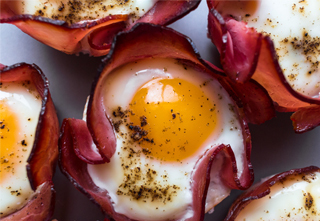 Keto is hot right now, but it’s not the easiest diet to follow. It’s no surprise, then, that keto dieters have spun off different versions of the diet to suit their needs. One that gets a lot of hype on social media is lazy keto.
Keto is hot right now, but it’s not the easiest diet to follow. It’s no surprise, then, that keto dieters have spun off different versions of the diet to suit their needs. One that gets a lot of hype on social media is lazy keto.
(As an aside, I bet there’s an interesting social psychology study here—people who hear “lazy keto” and go, “Oh cool, I can do keto and be lazy? Sign me up!” versus people who go, “Lazy?! That’s totally not the point of keto, arrgghh!” But I digress.)
Mark and I are both big proponents of self-experimentation and finding the eating plan that works for you. The question at hand is whether, and for whom, lazy keto might be a viable option. How does it stack up to “strict keto,” and does it work?
What Is (And Is Not) “Lazy Keto?”
There’s no agreed-upon definition of lazy keto, but the most common one is: a keto diet in which you only track carbohydrates. This is in contrast to strict keto, where you track carbs, fat, protein, and total calories.
The logic here is that carb intake determines whether your diet is or is not ketogenic (true), so it’s all you really need to know. In The Keto Reset Diet and Keto for Life, Mark recommends a limit of 50 grams of carbohydrate per day, with wiggle room if most of your carbs come from non-starchy vegetables and avocados. Thus, to do a lazy Primal+keto diet, you’d simply make sure you’re keeping your carbs below about 50 grams per day. Of course, you’d also still stick to Primal recommendations regarding food quality, avoiding industrialized seed and vegetable oils and the like.
Lazy Keto Isn’t Dirty Keto Or IIFYM
Sometimes “lazy keto” is used interchangeably with “dirty keto” or “IIFYM” (if it fits your macros), but they are not the same. Dirty keto and IIFYM don’t care about the types or quality of the food you eat. Anything goes as long as you stick to your keto macros.
You can do a keto diet that is both lazy and dirty: only track carbs, eating whatever foods you want as long as you don’t exceed your carb limit. You can also do one but not the other: lazy keto where you care very much about the quality and nutrient-density of your food (not dirty), or dirty/IIFYM keto where you strictly track your macros and calories (not lazy).
What Else Is NOT Lazy Keto?
Doing keto some days but not others
To me, the name “lazy keto” implies that you sometimes do keto, unless you don’t feel like it, then maybe you eat some cake and get back to keto tomorrow. That’s not it. If you’re doing lazy keto, the assumption is that you’re consistently following a keto diet, just without all the strict tracking.
If you’re following Mark’s strategy of sometimes eating keto-level carbs and sometimes eating more according to hunger, season, activity, and so on, that’s not really lazy keto. That’s living in the “keto zone”, as Mark says.
Likewise, if you practice strategic carb cycling but still track your macros pretty closely, that’s also not lazy keto.
Doing the best you can given your circumstances
Some people define lazy keto as anything less than 100 percent commitment to buying the highest-quality ingredients, plus strict tracking and management of every bite that goes in your mouth. It’s fine if you aspire to that, but I object to that characterization. Lazy keto doesn’t mean you’ve given yourself permission not to care about your diet as much as someone who follows strict keto.
There are lots of people who can’t or don’t want to micromanage and who are also not “lazy.” Buying the food you can afford and occasionally doing the best you can with less-than-ideal options, such as when you’re on the road, is not lazy keto.
Pros of Lazy Keto
If you’re new to keto and feeling overwhelmed by all the logistics of strict keto, you might be better off starting with lazy keto. Some folks just do better baby-stepping their way into change. Lower your carbs to get into ketosis first, then start optimizing fat, protein, and total calorie intake once you’ve gotten the hang of low-carb eating.
Lazy keto is also an option for people who have been enjoying the benefits of keto for a while but who are starting to get burned out with the food tracking. By tracking carbs at least, you are more likely to stay in ketosis if that’s important to you.
Strict keto often doesn’t work for people who don’t do well physically or mentally with restrictive diets. Lazy keto might be a good compromise for them. If you’ve had issues with dieting in the past, I’d urge you to talk to your medical practitioners or, if applicable, an eating disorder specialist before trying even lazy keto.
Cons of Lazy Keto
These are the most common objections to lazy keto vis-à-vis strict keto:
You won’t know if you’re really in ketosis.
Unless you measure ketones, this is technically true even if you track your food religiously. Ketosis is a pretty safe bet if you’re keeping your carbs down, though. No matter what type of keto diet you’re doing, if you want to know for sure that you’re in ketosis, you need to get a blood or breath meter (not pee strips) and measure.
However, the real objection here is that you won’t know if you’re in ketosis because you aren’t tracking protein, so let’s get into that.
You aren’t tracking protein, and too much protein will kick you out of ketosis.
This is a flawed premise to begin with—the old “protein-turns-into-chocolate-cake” fallacy. Mark has covered this on MDA, and we’ve talked about it ad nauseam in the Keto Reset Facebook group. Suffice it to say: it’s not a big concern.
Yes, some amino acids can be converted to glucose in the liver via a process called gluconeogenesis. Yes, eating a higher protein keto diet can blunt the production of ketones, but most people will never notice this effect. If you find that you feel better within a certain range of protein intake, then sure, lazy keto isn’t for you unless you have been tracking for long enough that you can eyeball your optimal protein intake. Otherwise, this concern shouldn’t stop you.
You aren’t tracking calories, so you might eat too much (or too little).
If you are trying to lose weight, calories matter. Still, it’s possible to meet your weight-loss goal using a lazy keto approach if you naturally eat in a deficit. Obviously, if you’re not making progress, the first thing to do is start tracking all your macros and see how much you’re actually eating.
I’m actually more concerned about people eating too few calories on lazy keto, especially if they’re combining it with daily intermittent fasting or OMAD (one meal a day). It’s already tricky enough to make sure you’re eating enough total calories, and especially protein, in a compressed eating window. If you’re not keeping track, you might unintentionally be underfueling.
This isn’t to say you can’t do lazy keto if you practice IF (intermittent fasting) or OMAD. I do think it’s a good idea to check in periodically, though, and see your total macro and calorie breakdown. Of course, also tune in to your body’s signals and be willing to respond to signs your body isn’t happy.
You might have keto flu over and over if you go in and out of ketosis.
Keto flu is the headaches, low energy, and generally blah phase that some people experience during the initial keto-adaptation process. However, once you are keto-adapted and metabolically flexible, keto flu shouldn’t be an issue even if you do go in and out of ketosis, especially if you manage your electrolytes.
If you’re tracking carbs, you probably aren’t going in and out of ketosis anyway. If you’re worried about keto flu, though, start with a period of strict keto—at least six weeks as recommended in The Keto Reset Diet—to get a decent foundation of keto adaptation before moving into lazy keto.
Deciding if Lazy Keto Is For You
Ask yourself two questions:
Why am I interested in doing a ketogenic diet?
Do the benefits I’m looking for probably depend on having a high level of ketones and/or being in ketosis all the time?
If you’re doing keto for weight loss, general health benefits, or longevity, the answer to question #2 is no, at least not according to the available science. Experimenting with lazy keto is probably fine if it appeals to you.
If you’re doing keto for therapeutic reasons, the answer to #2 might be yes. If so, you’re better off being strict. Keep in mind that not all of the therapeutic benefits of keto require high levels of ketones, though. Some benefits are simply due to removing pro-inflammatory or insulinogenic foods. In any case, I wouldn’t start with lazy keto if I was using keto therapeutically. I’d be strict at first, and then I’d work with my medical practitioners to decide if lazy keto is OK for me to try.
Finally, if you’re doing keto specifically for cognitive benefits or mental clarity, it’s possible that higher ketones are better. People who enjoy profound cognitive benefits often notice that they have to hit a certain ketone threshold to really feel them, at least anecdotally. This threshold differs from person to person. If you care strongly about achieving higher ketone levels, you should strictly track your macros and experiment with different levels of fat and protein intake to find your sweet spot. You can also try adding MCT oil or even exogenous ketone supplements to boost ketone levels.
How to Implement Lazy Keto
Lazy keto might look like:
Eating a wide variety of foods, tracking carbs and keeping them low enough to be keto.
Working from a short list of ingredients—eggs, meat, lowest-carb veggies only. You might or might not track carbs, but you’ve made it difficult to exceed your limit because the foods you eat are all so low.
Figuring out the macros for a small number of low-carb meals that you eat over and over so you never have to bother tracking. Technically this might qualify as lazy keto if you know how much fat and protein you eat, too. It’s still lazy keto if you allow yourself to add as much fat as you want via condiments, butter, oil, and cheese.
But Does it Work?
The answer is: it depends.
Lazy keto hasn’t been studied systematically. When deciding whether it offers the same potential benefits as strict keto, all we have to go on is anecdotal evidence and common sense.
For general health, I think it’s safe to say yes, you can get similar benefits by doing lazy keto. Moreover, lazy keto offers a level of chillness that is better for some people’s mental wellbeing. For them, lazy keto beats strict keto.
For weight loss, anecdotes suggest it’s likely to work at the beginning, especially for people transitioning from a high-carb SAD (Standard American Diet). There may come a time when you need to measure your food more precisely. Bear in mind that even strict keto doesn’t guarantee weight loss.
Lazy keto is probably not for you if you need or want consistently high levels of ketones for medical reasons or because you notice a big difference in how you feel.
Don’t be afraid to experiment. I so often see people get paralyzed by the fear that if they try something new, they’ll “mess everything up.” That’s incredibly unlikely unless you’re dealing with an exceptionally sensitive medical issue. Sure, for some people, going on a month-long pie and soda bender could wreak havoc, but that’s not what we’re discussing here.
And remember, it’s OK to mix up your diet. Switch between strict and lazy keto, then do a period of higher-carb Primal eating. Heck, try a couple weeks of carnivore if you want. In fact, it’s arguably un-Primal to rigidly adhere to one style of eating 24/7/365 (unless you need to for medical reasons).
Finally, don’t let the keto police persuade you that lazy keto isn’t “real keto.” There’s no such thing as “real keto.” Find the way of eating that works best in your life, and don’t worry about these labels.
Tell me in the comments: Has lazy keto worked for you? Has it definitely not worked for you? How have you modified your diet to suit your preferences and lifestyle?
References
Franz, MJ. Protein: metabolism and effect on blood glucose levels. Diabetes Educ. 1997 Nov-Dec;23(6):643-6, 648, 650-1.
Fromentin C, Tomé D, Nau F, et al. Dietary proteins contribute little to glucose production, even under optimal gluconeogenic conditions in healthy humans. Diabetes. 2013;62(5):1435–1442. doi:10.2337/db12-1208.
The post Lazy Keto: Worth the Hype or Just a Dirty (Keto) Trick? appeared first on Mark's Daily Apple.



February 26, 2020
How to Exercise While Fasting
 Before I get into the meat of this post, let’s make one thing clear: You should stay active while fasting. You shouldn’t just sit around. You shouldn’t give up. It’s actually imperative that you exercise while fasting.
Before I get into the meat of this post, let’s make one thing clear: You should stay active while fasting. You shouldn’t just sit around. You shouldn’t give up. It’s actually imperative that you exercise while fasting.
Everything we do, or don’t do, sends a message. If you stay sedentary during a fast, you’re telling your body several bad messages.
What Not Exercising While Fasting Does to Your Fitness
It tells your body you’re too weak to handle a fast. In previous incarnations of the human, fasting preceded food procurement. You didn’t stroll over to the fridge for a meal. You worked for it. You hunted (and gathered) for it. You exerted yourself to fill that empty belly. Simply lying around during a fast meant you’d die. Don’t tell yourself you’re too weak to handle the fast.
It tells your body you don’t need all that muscle tissue. If you don’t use your muscles during a fast, your body will consider them fair game. Those muscles can provide a big dose of amino acids that convert into glucose, and if you’re not using them, you’ll lose them to make glucose. “This bozo obviously doesn’t need those biceps, let’s dig in!”
Indeed, one of the reasons most people lose muscle when reducing calories and losing weight is that they fail to lift weights. Another big reason is they fail to eat enough protein, of course, but simply by lifting weights during calorie deficits, we can retain muscle mass. Since a fast is by definition an extreme reduction in calories, exercise becomes all the more important.
Okay, so exercising during a fast is a Good Move. How should you exercise?
The short story is that for short fasts (from the shortened eating window variety up to 24–36 hours), you should exercise the way you normally do.
For extended fasts, from 48 hours to a week or more, you should still exercise, but a little differently than “normal.”
Let’s get into it:
How to Exercise During a Longer Fast
1. Walk as much as possible.
The simplest form of exercise that everyone should do while fasting is walking. There’s no trick or science to walking while fasting. You just walk while not eating. You can do as much as you can squeeze in, because fasted walking isn’t just easy and not stressful—it’s anti-stress. It keeps you busy when you can’t think of anything but eating, when fasting is becoming a chore. Research indicates that walking while fasting is no more stressful than walking on eating days; in fact, fasting subjects spontaneously maintain their daily step count without affecting the benefits.
What are the benefits?
If you have trouble sticking to the fast—if you’re the type who wants to eat because you’re bored and can’t think of anything else to do, you need to walk as much as possible during a fast.
In those who are already pretty lean but want to get very lean, fasted walking can be effective. The classic bodybuilding trick for cutting body fat is the fasted morning walk. Wake up, consume no calories, and go for a brisk 20- to 30-minute walk as the fat swims around your body. This is the hardest body composition transition—from lean to very lean. Lean is what the body “wants,” and going lower requires getting over the natural tendency to hold on to diminished body fat stores. A fasted walk, jog, or cycling session performed in the aerobic zone almost forces the body fat to release into circulation. Insulin is low. Sensitivity is high. The stage is perfect, in theory.
2. Lift weights to preserve muscle.
On an extended fast, lifting weights is imperative. On a short-term fast, lifting weights is a great way to break the fast and augment the anabolic response from feeding. Your strategies for both will be different.
If you’re in the middle of a long-term fast and you want to stave off muscle loss:
Lift at a higher intensity for lower reps.
Don’t lift to failure.
Don’t max out.
On a scale of 1–10, with 1 being effortless and 10 taking all you have to complete, stay around a 6–8.
Keep several reps in the tank.
Stick to full-body compound movements rather than isolation. You want to hit the entire body with a powerful stimulus. You want to send your whole body a message, not just your biceps or your glutes.
This will provide a strong-enough stimulus to maintain muscle mass without being so stressful that you start breaking down more muscle mass than you can maintain.
3. Do “easy” cardio.
If you’re going to do “cardio” or endurance training during an extended fast, keep the intensity low to stay in the “aerobic zone”—the heart rate zone where you’re burning primarily body fat. A fasting human should be able to remain active in that zone almost indefinitely without needing much, or any, food. To determine your aerobic heart rate, subtract your chronological age from 180:
If you’re 20, your aerobic heart rate zone would be 160 beats per minute. Don’t exceed 160 BPM when endurance training in a fasted state.
If you’re 50, your aerobic heart rate zone would be 130 BPM. Don’t exceed 150 BPM when endurance training in a fasted state.
This will feel “easy,” and that’s the entire point. You’re not dipping into glycogen stores or increasing sugar cravings because you aren’t burning much sugar at all. You’re just (mostly) burning your own body fat.
I’d stay away from more intense endurance training, HIIT, and sprinting during a long fast unless it’s at the end and you plan on breaking the fast shortly afterwards. That kind of activity will make it much harder to fast. While you can definitely lift weights midway through a five-day fast and come out the other end okay, you probably won’t do so well doing a dozen hill sprints midway through that same fast.
How to Exercise During a Short-Term Fast
If you’re doing short-term fasting, train as you normally would. Evidence suggests that not only will your performance not suffer, but the training effect may also be augmented if you time your eating right. Here’s what research tells us:
In one recent study, males on a time-restricted eating schedule who lifted to failure for 8–12 reps for four sets ate 650 fewer calories than the non-fasting group, but retained all their muscle mass and even made gains on strength and muscle endurance. That said, the non-fasting group made more size gains.
Another study in women found that resistance training on a time-restricted eating schedule was fine and led to muscle gains as long as calorie intake and protein intake were maintained.
A 2009 study found that, compared to athletes who lifted weights after breakfast, athletes who lifted weights in the morning in a fasted state had an augmented anabolic response to a post-workout protein-and-carb shake.
There’s also merit in maintaining the fast for a few more hours after your workout. This will really augment the growth hormone release—which is great for fat burning and tissue maintenance. I do this about half the time I work out in a fasted state.
There are no hard-and-fast rules to exercising while fasting. After all, you’re still you. You know what works for you. You know what makes you tick.
But if you want me to generalize? Most people on a longer fast will do best going for a walk every day and lifting at least once or twice.
What about you, folks? How do you exercise on a longer fast?
Take care and be well.
References
Klempel MC, Bhutani S, Fitzgibbon M, Freels S, Varady KA. Dietary and physical activity adaptations to alternate day modified fasting: implications for optimal weight loss. Nutr J. 2010;9:35.
Tinsley GM, Forsse JS, Butler NK, et al. Time-restricted feeding in young men performing resistance training: A randomized controlled trial. Eur J Sport Sci. 2017;17(2):200-207.
The post How to Exercise While Fasting appeared first on Mark's Daily Apple.



February 25, 2020
Primal and Keto Collagen Recipes
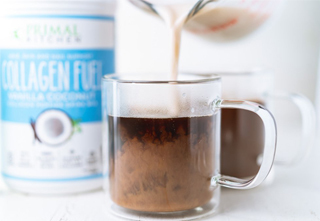 Mark’s said it before: He advocates for collagen to become the fourth macronutrient. Collagen supports collagen-based structures in the body, such as fascia, ligaments, tendons, cartilage, skin, nails, and hair, and most of us just don’t get enough of it from meat, dairy, eggs, or plant proteins. Learn more about the important role glycine, the primary amino acid found in collagen protein, and check out our creative culinary ways to include more collagen in your diet.
Mark’s said it before: He advocates for collagen to become the fourth macronutrient. Collagen supports collagen-based structures in the body, such as fascia, ligaments, tendons, cartilage, skin, nails, and hair, and most of us just don’t get enough of it from meat, dairy, eggs, or plant proteins. Learn more about the important role glycine, the primary amino acid found in collagen protein, and check out our creative culinary ways to include more collagen in your diet.
Reasons to Include Collagen in Your Diet
Most people regard amino acids in one of two ways: essential, meaning our bodies can’t synthesize them, or inessential, meaning our bodies can. There’s also a third category of amino acids: conditionally essential, which become essential in times of illness and heightened stress. One such conditionally essential amino acid is glycine.
A research review published in the journal Oxidative Medicine and Cellular Longevity found that glycine plays a crucial role in controlling epigenetics as well as anti-inflammatory, cryoprotective, and immunomodulatory functions. Researchers found that oral supplementation of glycine in the proper dose can successfully decrease metabolic disorders in those with cardiovascular and inflammatory diseases, diabetes, cancers, and obesity.
Glycine, the primary amino acid in collagen, is synthesized from the amino acid serine. Foods that contain glycine include meat, fish, eggs, and dairy—abundant in the Primal diet, depending on whether you can tolerate eggs and dairy. A typical daily diet synthesizes about 2–3 grams of glycine. But that’s not nearly enough; the human body requires at least 10 grams per day for basic metabolic processes.
An easy way to get more glycine each day is to supplement with collagen. Get a good collagen supplement (Primal Kitchen happens to make a few) and mix it into water, coffee, or tea, and down the hatch it goes. Or, you could get more creative and add collagen to smoothies, stir it into chia pudding or plain yogurt, use it in savory applications such as sauce or soup, or add it to the occasional Primal treat.
Collagen Coffee Recipes
Mark’s Collagen Coffee Routine
Keto Coffee Popsicles

Cold brew lovers: This one’s for you. It’s collagen coffee on a stick, and it’s a delight whether the weather is sweltering or frigid.
Mark’s Vanilla Collagen Hemp Latte
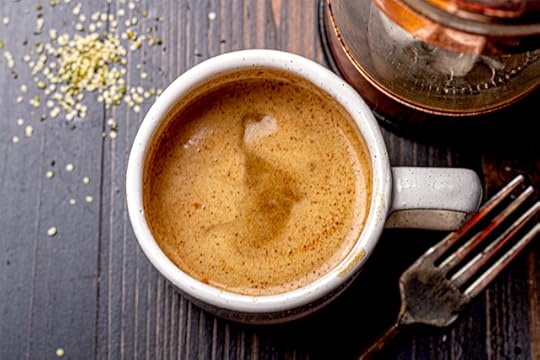
Ever the experimental guinea pig, Mark devised a way to include more magnesium in his coffee after reading that ancestral drinking water may have been enriched with the mineral. Test it out for yourself in this toast-worthy version of magnesium-enriched water (boosted with collagen and coffee).
Keto Caramel Macchiato
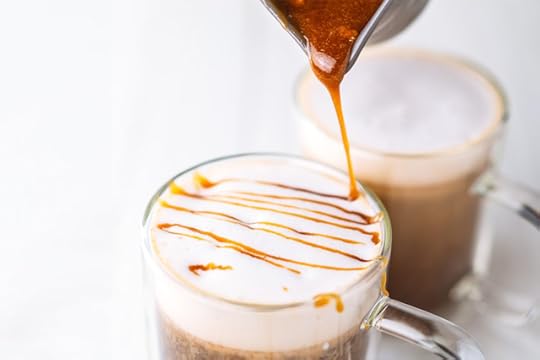
This one is borderline treat but if you’re celebrating a special occasion (Mother’s Day, Sunday brunch with the grown-ups, your birthday… or even just the fact that you’ve quit your daily habit of buying the “regular” versions of this recipe at your local coffee shop), this keto caramel macchiato will knock your socks off.
Chocolate Collagen Recipes
Chocolate Collagen Pudding
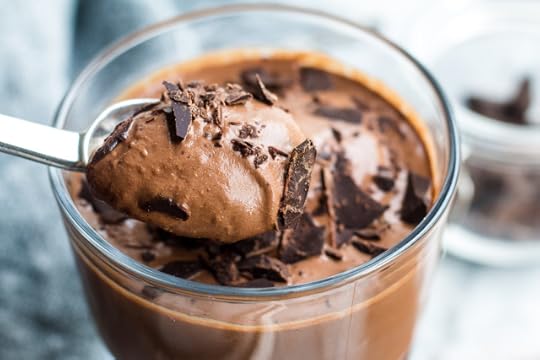
With two scoops of collagen plus cocoa powder and coconut milk (sub regular milk if you prefer), this chocolate collagen pudding satisfies even the most discerning chocolate lover without all the sugar and additives many puddings (especially boxed powders or pre-made varieties have).
Keto Fridge Fudge
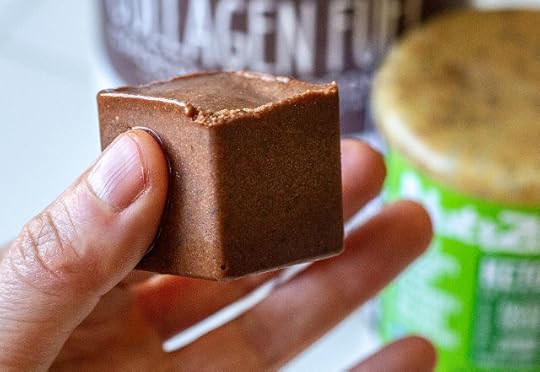
This tempting keto fudge is just as creamy as you remember it, but with only five grams of carbs and a boost of collagen as well as healthy fats. And it only takes 15 minutes to prepare (not including cooling time in the fridge).
Keto Chocolate Hazelnut Truffles

Sweet, adorable, and moist with toothsome toppings that contrast the gooey interior, truffles appear on holiday cookie plates, fancy tea time trays, and often as petite fours for all of these reasons. This keto-friendly version combines dark chocolate, chocolate collagen, and hazelnut butter.
Mexican Collagen Hot Chocolate

Mexican hot chocolate is a rich mug of velvety chocolate, wintry spices, and a hint of heat from cayenne pepper or chili powder. It’s the perfect way to thaw after coming inside from a blustery snow storm, a day on the slopes, or to relish an evening cozied close to a sputtering fireplace.
Collagen Smoothie Recipes
Fab Four Collagen Smoothies
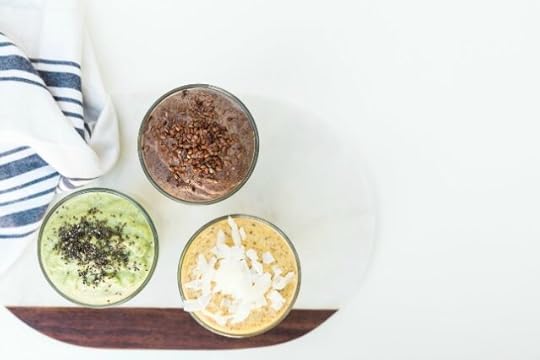
Designed by Certified Celebrity Health Coach Kelly LeVeque, these Fab Four collagen smoothies limit fruit and include healthy fats and plenty of protein for satiating fuel in a glass.
Pitaya Berry Smoothie Bowl
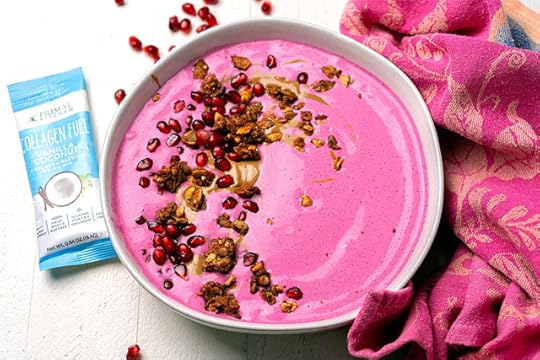
This pretty-in-pink smoothie bowl gets its striking magenta hue from pitaya (a.k.a. dragon fruit) and strawberries, and gets bursting sweetness from pomegranate seeds. Collagen and a tablespoon of sunflower butter adds protein and fat; add grain-free granola for crackly contrast.
Chocolate Peanut Butter Protein Smoothie
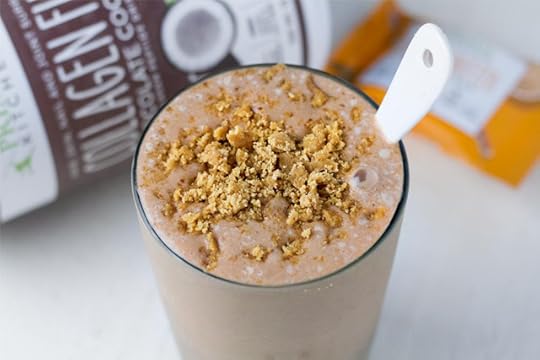
Similar to the consistency of frozen custard or a diner milkshake, this smoothie is made thick with chia seeds and deeply chocolate with cacao powder and chocolate collagen. Crumble peanut butter protein bars on top for a cookie-like topping.
Collagen Fat Bombs, Bites, and Balls Recipes
Vanilla Coconut Collagen Bites
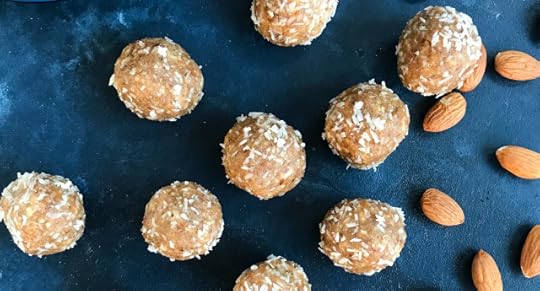
The author of Rachel’s Good Eats created an addicting collagen balls recipe flavored with vanilla, coconut, and cinnamon. Made with two types of nuts plus flax and chia seeds, these make easy post-workout snacks.
Keto Earl Grey Collagen Fat Bombs

These elegant fat bombs combine the distinctive flavor of bergamot with vanilla, coconut, and hemp hearts to create an entirely edible tea cup.
Mango Pineapple Paleo Balls
?
A touch of pineapple and mango flavors give a tropical twist to dairy-free Primal and paleo balls. Made with macadamia nuts, hemp seeds, cashew butter, plus collagen, there’s a lot of healthy fats and protein packed into these two-bite balls.
Collagen Treat Recipes
Strawberry Hibiscus Collagen Pops

Strawberries offer antioxidant power in their own right, helping reduce inflammation and fight free radicals. The addition of collagen peptides “seals and heals” your gut lining, repairs damaged cell walls and offers essential with amino acids. All this in handheld, frozen form!
Dairy-Free Cashew Collagen Creamer
This Primal-friendly creamer combines five simple ingredients to make your coffee or tea sweeter and more creamy without dairy. All it takes is some overnight soak time, a high-speed blender, and a mason jar.
Keto Strawberry Cream Pie

This glorious pie celebrates sun-ripened strawberries picked at the height of their season, and mashed with cream cheese, heavy cream, and vanilla. This vanilla collagen-spiked half-cheesecake, half berry pie will have you swooning for summer no matter what time of year you make it.
Tahini Fudge

Chewy, unctuous, a touch savory and sweet, this tahini fudge can be boosted with collagen peptides to make a more substantial treat. These bite-sized pieces of fudge taste a little like chocolate chip cookie dough dusted with flaky sea salt.
Savory Collagen Recipes
Collagen Peptides Pan Sauce
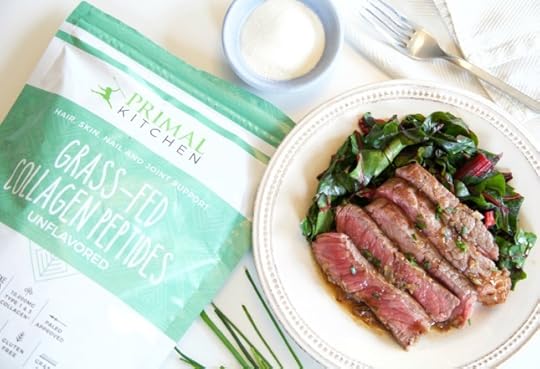 Primal
PrimalThis shortcut, ready-in-minutes pan sauce creates a rich and meaty sauce. Fortify store-bought stock with a few scoops of collagen peptides, some sautéed shallots and a couple pats of butter and you have a restaurant-worthy sauce to spoon over meat and veggies.
Keto Chaffles (Savory & Sweet)
Chaffles are a Primal, paleo, and keto way to eat waffles. The basic recipe is simple: one egg, shredded cheese, one tablespoon almond flour, and one scoop of collagen peptides. This savory version works great as “bread” for a sandwich or burger. Our video includes some sweeter chaffle recipe suggestions as well.
Sweet Potato Soup with Collagen Peptides

This protein-rich, thick sweet potato soup is just the thing to soothe if you’re feeling under the weather. This soup comes together easily when you use frozen butternut squash cubes. Blend the soup with collagen peptides, and garnish with cooked ground turkey or beef (not your average herb garnish!).
Read More About Collagen
10 Reasons to Eat More Collagen
What Collagen Does for Performance
Does Vegetarian Collagen Exist?
Collagen vs. Whey: Which Protein Is Best for Your Needs?
Collagen for Skin: The Truth Behind the Benefits
Dear Mark: Glycine as Collagen Replacement?
References
Meerza AR, Pathan SB, Buddolla V, Senthilkumar R. Multifarious Beneficial Effect of Nonessential Amino Acid, Glycine: A Review. Ox. Med. Cell Longev. 2017; 17160701.
Melendez-Hevia E, DePaz-Lugo P, Cornish-Bowden A, Cardenas M. A weak link in metabolism: the metabolic capacity for glycine biosynthesis does not satisfy the need for collagen synthesis. J Biosci. 2009 Dec;34(6):853-72.

The post Primal and Keto Collagen Recipes appeared first on Mark's Daily Apple.



February 24, 2020
Will Red Meat Cause Your Heart to Explode?
 Folks, I’m excited to bring you this book excerpt from The Carnivore Code. Author Dr. Paul Saladino is one of the best informed thought leaders and advocates of the carnivore diet. Paul uses his experience in functional and traditional medicine to devise a holistic picture of healing. I think you’ll appreciate his detailed, well-researched, and measured approach to presenting and analyzing evidence.
Folks, I’m excited to bring you this book excerpt from The Carnivore Code. Author Dr. Paul Saladino is one of the best informed thought leaders and advocates of the carnivore diet. Paul uses his experience in functional and traditional medicine to devise a holistic picture of healing. I think you’ll appreciate his detailed, well-researched, and measured approach to presenting and analyzing evidence.
We’ve reviewed study after study that’s correlated red meat consumption with mortality risk, atherosclerosis, heart disease, and more. Paul takes the topic to task in The Carnivore Code, hopefully proving once and for all the true physiological cause of these conditions.
You can purchase a copy of The Carnivore Code here. From February 24, 2020 until February 26, 2020, you can enter for your chance to win a signed copy of The Carnivore Code. Simply follow @marksdailyapple and @carnivoremd on Instagram, tag some friends in the comments of the Instagram giveaway announcement, and you’ll be automatically entered to win a signed copy of the book plus a canister of Primal Kitchen Collagen Peptides. Five winners will be selected and notified via DM; U.S. entrants only. Good luck, and enjoy the excerpt.
Few things conjure more fear in the hearts and minds of the general population than the big, bad cholesterol monster and the associated trepidation that red meat will cause our arteries to become filled with plaque. After all, we’ve been told by cardiac surgeons that when they scoop plaque out of the arteries in our heart or neck, it looks just like animal fat, eggs, or butter.
In this excerpt, we’ll debunk the notion that eating animal meat, fat, or organs is bad for our heart and blood vessels and slay this final beast once and for all. We’ll see that these false notions have been based on more misleading epidemiological literature and how interventional and mechanistic studies tell a very different story. Come, brave adventurers, our destiny of discarding unfounded ideologies and reclaiming the vibrant health of our ancestors awaits!
The Basics of Lipoproteins and Cholesterol
The word “cholesterol” is often used colloquially to refer to all of the lipoproteins in our blood, but technically, cholesterol is a steroid backbone type of molecule that is used to make all sorts of vital compounds in human physiology. Our body makes around 1,200 milligrams of cholesterol every day for many important purposes, including the proper formation of all of our cell membranes.
The fat we eat is absorbed from our intestines and packaged as triglycerides with dietary cholesterol into a type of lipoprotein known as chylomicrons, marked with apolipoprotein B48. These particles circulate in the blood stream, dropping off their contents to cells of the body before becoming chylomicron remnants and being taken up by the liver.
In medicine, the term “total cholesterol” refers to the sum of all the cholesterol molecules in the blood and is usually measured directly in laboratory tests. In order to know how much of this cholesterol resides in the different lipoproteins, these must be measured individually. Most current lipid testing measures HDL, LDL, VLDL, and triglycerides directly, but older assays measure only some of these and must calculate LDL, which you may see written as LDL-C. For this reason, many previous research studies have looked at total cholesterol levels rather than LDL. Historically, elevated levels of total cholesterol have been assumed to correlate with elevated levels of LDL, and unless triglycerides are extremely elevated, this is generally a reasonable assumption.
The Vital Role of LDL in Our Body
Most of the cells of our body can make a bit of cholesterol from scratch, but they also rely heavily on the delivered supply of this molecule to build membranes and hormones. In addition to its vital role transporting building blocks and nutrients, LDL also serves important roles within the immune system. Yes, you read that correctly, LDL plays a valuable part in our response to assault by infectious invaders, as do many of the lipoproteins, including HDL. When gram-negative bacteria seek to invade our body, they release a cell wall component known as endotoxin, which is quite inflammatory and can strongly trigger the immune system. But don’t worry, friendly neighborhood LDL is around to bind-up this toxin and prevent things from getting out of hand.
Is there evidence that higher levels of LDL could be protective against infection in us? You bet there is! There are many studies that show elevated levels of LDL are not a risk factor for increased all-cause mortality or cardiovascular mortality in the elderly.9 Furthermore, there are many studies suggesting that higher levels of LDL are protective as we age, which is most likely connected with its role in immune function.1,2,3-11
In a sample of 347 individuals over the age of sixty-five, those with low total cholesterol had a significantly higher risk of dying by non-vascular causes, while those with elevated total cholesterol had half the risk of the reference population.1 Another study of 105 individuals over the age of eighty living in Iceland found that those with the highest total cholesterol level had less than half the all-cause mortality of those with lower levels.12 An even larger investigation called the Leiden 85-plus study had even more striking results. This study included 724 elderly individuals living in the Netherlands in whom the correlation between total cholesterol and all-cause mortality was measured for ten years. The authors found that for every 38 milligrams per deciliter increase in the total cholesterol, there was a corresponding 15 percent decrease in the risk of dying over this time period.
Clearly, LDL is a valuable particle in our blood and serves many indispensable roles. How can LDL be both protective and harmful? This doesn’t seem to make any sense! The answer is that LDL itself is not harmful, but in certain situations, it can be involved in the process of responding to injury and inflammation—making it look like it’s a bad actor when it’s merely present at the scene of the crime.
So… What Causes Atherosclerosis?
There are more than a quintillion particles of LDL floating around in our bloodstream. If every LDL particle that entered the subendothelial space in our arteries led to the formation of a plaque, we’d be deader than a doornail long before our first birthday. Every second of every day, lipoproteins like LDL are moving in and out of the walls of both veins and arteries, delivering nutrients to the cells there for energy and the construction of membranes. Clearly, there must be another part of this equation that leads to retention of some of these LDL particles within the arterial wall.
Interestingly, HDL particles are smaller and ten times more numerous than LDL. They carry more cholesterol in our blood stream, but these particles do not participate in the formation of atherosclerotic lesions. Why not? Because they do not get stuck in the subendothelial space.
Within the arterial wall, it appears that only particles containing the APOB molecule are able to bind to the proteoglycans within the intima and be retained.13 It’s not the size of the particle, or the number of particles moving into the vessel wall that’s important, it’s how likely a lipoprotein is to be retained that determines whether or not it contributes to the process of plaque formation.
What determines how sticky the LDL particle and the intimal space are? Ah, my friends, this is truly the million-dollar question! There’s very good evidence that during the states of insulin resistance and inflammation, both the LDL particle and the intimal space get coated in “molecular velcro” and become more sticky.14,15,16-18
Specifically, studies looking at the arteries of diabetics and arterial wall injury have shown changes in the proteoglycan matrix that increase its affinity for LDL.19 Additional research reveals that the LDL particle becomes more likely to be bound to proteoglycans in the intimal space when it is enriched with apolipoprotein ApoC III—a process that occurs during states of insulin resistance—making for a dangerous combination that strongly predisposes to plaque formation. The risk of atherosclerosis is so high in diabetics that rates of heart attack are elevated in this population even with low levels of LDL.20
At this point, you may be saying, “Sure, I believe you on this, but doesn’t atherosclerosis occur in people without diabetes or pre-diabetes? How common is this scenario of insulin resistance?” Though diabetes and pre-diabetes are diagnosed in 35 percent of the American population, there’s strong evidence that insulin resistance is much more common than this! There is evidence that a whopping 88 percent of the American population has some degree of metabolic dysfunction.21 If the vast majority of people around us have insulin resistance, is it any wonder that some studies have shown a correlation between LDL levels and cardiovascular disease? Almost the entire population of the U.S. has velcro on their lipoproteins and within their arteries, and the tennis balls are getting stuck to the wall!
So to answer the previous question, there’s good evidence that when atherosclerosis does occur, it is almost always in the setting of insulin resistance and metabolic dysfunction.
One of the biggest mistakes Western medicine makes is to extrapolate these pathologies to the 12 percent of us who are not insulin resistant and not inflamed, warning us that certain cardiovascular disease will swiftly follow with an elevated LDL.
Those of us with good insulin sensitivity are essentially a different breed, and there are many striking stories of plaque regression among insulin-sensitive individuals with “elevated LDL” eating carnivore or ketogenic diets. In the absence of insulin resistance and inflammation, higher levels of LDL are probably protective because of their roles with the immune response. Want to live a long time? Eat in a manner that allows for insulin sensitivity, decreases inflammation, and leads to a robust amount of valuable LDL particles. Carnivore diet, anyone?
Excerpted (in a summarized format) from The Carnivore Code by Paul Saladino, MD.
References
1. Raiha, I., Marniemi, J., Puukka, P., Toikka, T., Ehnholm, C., & Sourander, L. (1997). Effect of serum lipids, lipoproteins, and apolipoproteins on vascular and nonvascular mortality in the elderly. Arteriosclerosis, Thrombosis, and Vascular Biology, 17(7), 1224-1232. doi:10.1161/01.atv.17.7.1224
2. Forette, F., De la Fuente, X., Golmard, J., Henry, J., & Hervy, M. (1982). The prognostic significance of isolated systolic hypertension in the elderly. Results of a ten year longitudinal survey. Clinical and Experimental Hypertension. Part A: Theory and Practice, 4(7), 1177-1191. doi:10.3109/10641968209060782
3. Forette, B., Tortrat, D., & Wolmark, Y. (1989). Cholesterol as risk factor for mortality in elderly women. The Lancet, 333(8643), 868-870. doi:10.1016/s0140-6736(89)92865-1
4. Risk of fatal coronary heart disease in familial hypercholesterolaemia. Scientific Steering Committee on behalf of the Simon Broome Register Group. (1991). BMJ, 303(6807), 893-896. doi:10.1136/ bmj.303.6807.893
5. Weijenberg, M. P., Feskens, E. J., & Kromhout, D. (1996). Total and high density lipoprotein cholesterol as risk factors for coronary heart disease in elderly men during 5 years of follow-up: The Zutphen elderly study. American Journal of Epidemiology, 143(2), 151-158. doi:10.1093/oxfordjournals.aje.a008724
6. Weuenberg, M. P., Feskens, E. J., Bowles, C. H., & Kromhout, D. (1994). Serum total cholesterol and systolic blood pressure as risk factors for mortality from ischemic heart disease among elderly men and women. Journal of Clinical Epidemiology, 47(2), 197-205. doi:10.1016/0895-4356(94)90025-6
7. Zimetbaum, P., Frishman, W. H., Ooi, W. L., Derman, M. P., Aronson, M., Gidez, L. I., & Eder, H. A. (1992). Plasma lipids and lipoproteins and the incidence of cardiovascular disease in the very elderly. The Bronx Aging Study. Arteriosclerosis and Thrombosis: A Journal of Vascular Biology, 12(4), 416-423. doi:10.1161/01.atv.12.4.416
8. Abbott, R. D., Curb, J., Rodriguez, B. L., Masaki, K. H., Yano, K., Schatz, I. J., … Petrovitch, H. (2002). Age-related changes in risk factor effects on the incidence of coronary heart disease. Annals of Epidemiology, 12(3), 173-181. doi:10.1016/s1047-2797(01)00309-x
9. Chyou, P., & Eaker, E. D. (2000). Serum cholesterol concentrations and all-cause mortality in older people. Age and Ageing, 29(1), 69-74. doi:10.1093/ageing/29.1.69
10. Menotti, A., Mulder, I., Nissinen, A., Feskens, E., Giampaoli, S., Tervahauta, M., & Kromhaut, D. (2001). Cardiovascular risk factors and 10-year all-cause mortality in elderly European male populations. The FINE study. European Heart Journal, 22(7), 573-579. doi:10.1053/euhj.2000.2402
11. Krumholz, H. M. (1994). Lack of association between cholesterol and coronary heart disease mortality and morbidity and all-cause mortality in persons older than 70 years. JAMA: The Journal of the American Medical Association, 272(17), 1335-1340. doi:10.1001/jama.272.17.1335
12. Jónsson, Á., Sigvaldason, H., & Sigfússon, N. (1997). Total cholesterol and mortality after age 80 years. The Lancet, 350(9093), 1778-1779. doi:10.1016/s0140-6736(05)63609-4
13. Hurt-Camejo, E., & Camejo, G. (2018). ApoB-100 lipoprotein complex formation with intima proteoglycans as a cause of atherosclerosis and Its possible ex vivo evaluation as a disease biomarker. Journal of Cardiovascular Development and Disease, 5(3), 36. doi:10.3390/jcdd5030036
14. Hiukka, A., Stahlman, M., Pettersson, C., Levin, M., Adiels, M., Teneberg, S., … Boren, J. (2009). ApoCIII-enriched LDL in type 2 diabetes displays altered lipid composition, increased susceptibility for sphingomyelinase, and increased binding to biglycan. Diabetes, 58(9), 2018-2026. doi:10.2337/db09-0206
15. Olsson, U., Egnell, A., Lee, M. R., Lunden, G. O., Lorentzon, M., Salmivirta, M., … Camejo, G. (2001). Changes in matrix proteoglycans induced by insulin and fatty acids in hepatic cells may contribute to dyslipidemia of insulin resistance. Diabetes, 50(9), 2126-2132. doi:10.2337/diabetes.50.9.2126
16. Hulthe, J., Bokemark, L., Wikstrand, J., & Fagerberg, B. (2000). The metabolic syndrome, LDL particle size, and atherosclerosis. Arteriosclerosis, Thrombosis, and Vascular Biology, 20(9), 2140-2147. doi:10.1161/01. atv.20.9.2140
17. Wasty, F., Alavi, M. Z., & Moore, S. (1993). Distribution of glycosaminoglycans in the intima of human aortas: Changes in atherosclerosis and diabetes mellitus. Diabetologia, 36(4), 316-322. doi:10.1007/ bf00400234
18. Rodriguéz-Lee, M., Bondjers, G., & Camejo, G. (2007). Fatty acid-induced atherogenic changes in extracellular matrix proteoglycans. Current Opinion in Lipidology, 18(5), 546-553. doi:10.1097/ mol.0b013e3282ef534f
19. Srinivasan, S. R., Xu, J., Vijayagopal, P., Radhakrishnamurthy, B., & Berenson, G. S. (1993). Injury to the arterial wall of rabbits produces proteoglycan variants with enhanced low-density lipoprotein-binding property. Biochimica et Biophysica Acta (BBA) – Lipids and Lipid Metabolism, 1168(2), 158-166. doi:10.1016/0005-2760(93)90120-x
20. Howard, B. V., Robbins, D. C., Sievers, M. L., Lee, E. T., Rhoades, D., Devereux, R. B., … Howard, W. J. (2000). LDL cholesterol as a strong predictor of coronary heart disease in diabetic individuals with insulin resistance and low LDL. Arteriosclerosis, Thrombosis, and Vascular Biology, 20(3), 830-835. doi:10.1161/01. atv.20.3.830
21. Araújo, J., Cai, J., & Stevens, J. (2019). Prevalence of optimal metabolic health in american adults: National health and nutrition examination survey 2009–2016. Metabolic Syndrome and Related Disorders, 17(1), 46-52. doi:10.1089/met.2018.0105
The post Will Red Meat Cause Your Heart to Explode? appeared first on Mark's Daily Apple.



Mark Sisson's Blog
- Mark Sisson's profile
- 199 followers












